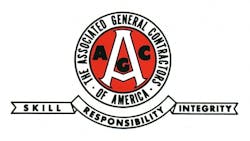November Construction Drops Slightly Amid Positive Trends
Construction spending dropped slightly in November but outlays for the year remained on track for a modest increase compared to 2013 totals, according to an analysis by the Associated General Contractors of America. Association officials said the figures are released as the group’s members prepare to push for action on a series of federal infrastructure programs, including funding for highway and transit upgrades and to maintain clean water systems across the country.
“Today’s figures continue the seesaw pattern that has characterized residential private nonresidential and public construction throughout 2014,” said Ken Simonson, the association’s chief economist. “Overall construction spending dipped in November from an upwardly revised October total as residential building advanced but private and public nonresidential spending both retreated.”
Construction spending in November totaled $975 billion at a seasonally adjusted annual rate, down 0.3 percent from the October total but 2.4-percent higher than in November 2013, Simonson added. Private residential spending in November increased 0.9 percent from October, but dropped 0.5 percent from a year earlier, while private nonresidential spending declined 0.3 percent for the month but jumped 4.7 percent year over year. Public construction spending dropped 1.7 percent from October, but climbed 3.2 percent compared to November 2013.
“Month-to-month figures tend to fluctuate a lot,” added Simonson. “In fact, the first estimates are often revised substantially. Totals that combine several months give a truer picture of underlying trends. In this case, the image is more uniformly positive: total spending on all three components increased during the first 11 months of 2014 combined compared with the year-to-date period in 2013. Both the monthly variability and the overall upward trend are likely to continue through much of 2015.”
Total spending year-to-date was 5.7 percent higher than the January-November 2013 total, Simonson said. Private residential spending climbed 4.9 percent, while private nonresidential construction increased 10.8 percent. Public outlays for construction grew 1.1 percent as state and local governments boosted spending by 1.6 percent, more than offsetting a 4.0-percent decline in federal construction expenditures.
Association officials said new spending data comes as the group prepares a push to get Congress and the Obama administration to pass needed infrastructure legislation, particularly action to finance the federal highway and transit program and to set up a more sustainable way to finance clean water system upgrades in communities across the country.
“The president and Congress can demonstration their ability to work together by enacting measures that will boost our economic growth, improve our aging infrastructure and help stability in the erratic construction sector,” said Stephen Sandherr, AGC CEO.
